Executive Summary
This session, which I hosted in collaboration with my executive contacts at JLL, spotlighted shared experiences, improvement opportunities, and success stories related to how senior in-house counsel and legal operations leaders can work to advance their corporate law department’s mission. In effect, we explored the question: How can I be a business enabler?
Participating Organizations
United Technologies Corporation
Anixter
TransUnion
HERE Technologies
Exelon
Grainger
IntraVires Health
JLL
Microsoft
Blue Cross Blue Shield
Citadel
Home Chef
Ryan Specialty Group, LLC
Morae Global
—–
Key Takeaways
- Law Department Mission:
- Generally, the group agreed that the law department should explore how best to map department goals to enterprise objectives and risks. The group exchanged insights on how law departments can better align with the business. One insight was to build a law department’s goals for the year using the same language as the business partner’s goals. For example, if the business partner has a focus on “New Customers”, the law department can adopt a “mission communication plan” of describing its contract management role as “prioritizing new customer agreements”.
- Other discussion points came up around the relationship between the law department’s mission, the company culture, and business impact. An insight was shared on how the law department can position part of its mission as “being the steward of the company’s culture”; another was on ensuring that the law department’s mission showcase an element of “real business impact”.
- The phrase “earning trust” was referenced multiple times to describe how law departments can build up their “internal brand” with business partners. For example, in-house counsel can continue to establish a trusted advisor relationship with the sales function—helping to inform sales value propositions or partnering with sales reps to help them overcome objections from prospective clients.
- Spot Benchmarks
Do you have a mission statement for your law department?
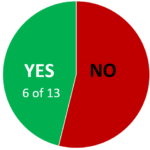
Do you tie your law department objectives to the enterprise objectives?
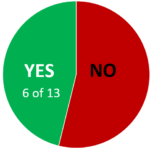
Does your law department play a direct management role in enterprise risk management (ERM) i.e. does ERM sit within the law department?

Who does the Chief Legal Officer* report into:
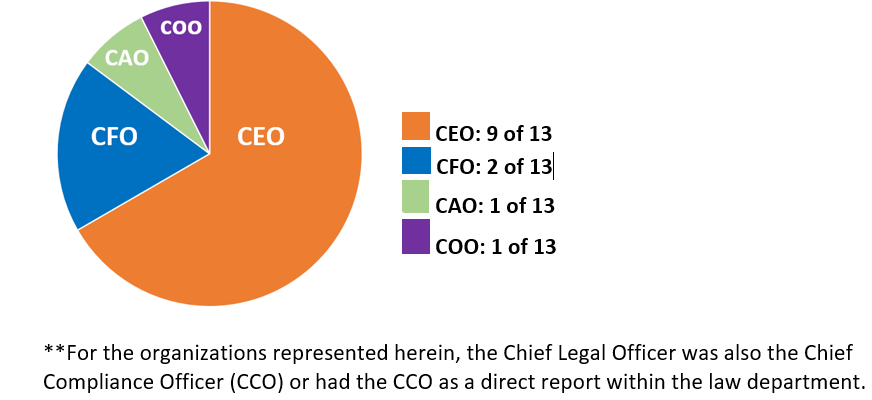
- Right People
- In recruiting legal talent into the corporate law department, the group reacted favorably to the following ideas:
- Inviting internal business partners to join in as part of the interview process.
- Leveraging the LinkedIn professional networks of current members of the law department as a source to identify candidates who may be good fits culturally and for diversity purposes.
- Beyond having the requisite technical skills (“hard skills”) to do the job at hand for the law department, the most notable “soft skill” characteristics that the group focused on were:
- Having the Aptitude for Embracing Change
- Being Coachable
- Demonstrating Intellectual Curiosity
- One success story that was shared involved the use of a strategic internship program with law students to accelerate business expertise and create a deeper bench of incoming talent. The program also incorporates targeted business and sales training for the participants.
- Most of the attendees agreed that there is a definite need for a defined training and mentoring program, and that just plugging in Associates from firms is no longer viewed as a best practice for staffing the legal department.
- Several attendees also spoke about the necessity for in-house lawyers to have meaningful insight into the business.
- In recruiting legal talent into the corporate law department, the group reacted favorably to the following ideas:
- Right Process and Systems
- There was some consensus on the utilization of Serengeti, now Law Tracker.
- Many of the attendees seemed to have run into some issues with proper account coding and most agreed that “miscellaneous” or “other” should be locked out.
- Most of the attendees indicated that technologies utilized for discovery are no longer isolated within a litigation specific silo. The technologies along with those staff members who utilize them are being included in the organization’s holistic approach to information governance, compliance, and discovery needs.
- The evolution of O365 and cloud services relative to discovery and information governance have heightened the sensitivities to being flexible and informed of current technology. It has also created new and more rigid security requirements around access to and control of enterprise data.
- There was group consensus on the need for a contract management system, especially in today’s demanding business environment.
- Several attendees gave specific examples of the benefits of having a comprehensive contract lifecycle management (CLM) system:
- Improved compliance
- Faster cycle times for contract creation and execution
- Ability to integrate new technologies in the contracting process. For example, imagine being able to utilize chatbots to automate portions of the contracting process? This is happening today in some law departments.
- Spot Benchmarks
Do you have a contracts management system?
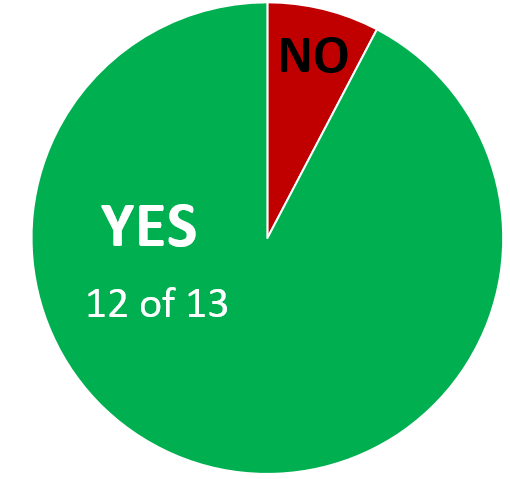
Do you have an e-Billing system (tracking outside counsel spend)?
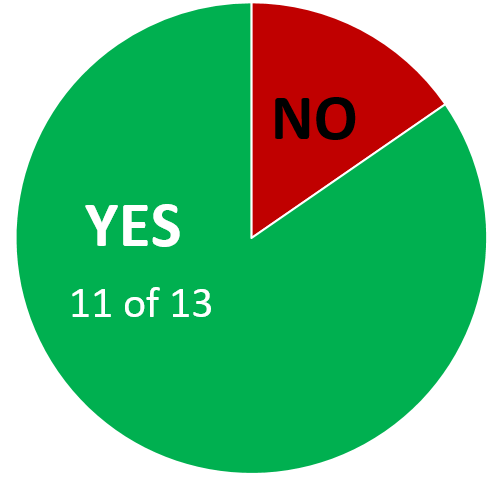
Do you have a total matter management system (tracking outside counsel spend and “advice and counsel” spend)?
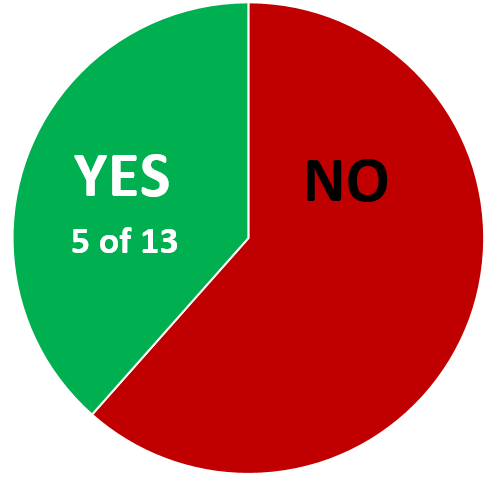
- Metrics, Scorecards, and Dashboard for Business Partners
- The group was very engaged around the discussion of metrics.
- Some highlights:
- Metrics ≠ Results. Law departments should be mindful of “just managing to the metric”, especially if this leads to the detriment of driving real results for the business.
- Metrics, whether qualitative or quantitative, should be designed with a serious consideration for how the metrics will come across in a “report out to senior management”.
- The group generally liked the idea of using metrics that measure cycle time (matters generally or maybe contracts specifically) and applying a degree of difficulty calculation (1-5) and effort expended (1-5).
- Another practice that really resonated with the group was the use of “number of touches” as a metric for the contract management process.
- Rating law firms with scorecards was a key area of focus. One attendee shared a successful practice where they use a 40-question scorecard to engage their panel firms– looking at key performance indicators including spend by matter, average staffing costs, and other measures.
- Most of the attendees reported being more comfortable with metrics that were financial in nature; the greater struggle was pinning down value metrics and how best to capture and measure them.
- Spot Benchmarks
Do you use Alternative Fee Arrangements (AFA)?
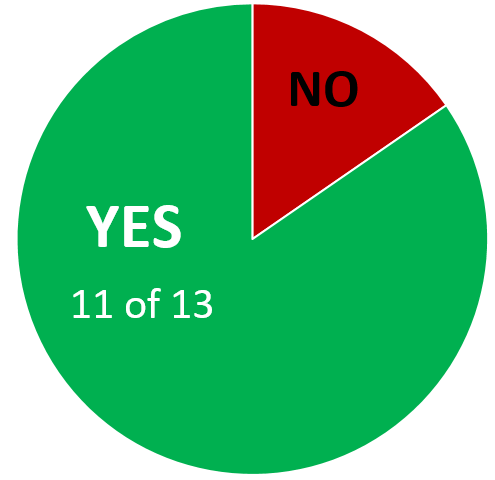
Do you have a company policy in place for engaging outside counsel?
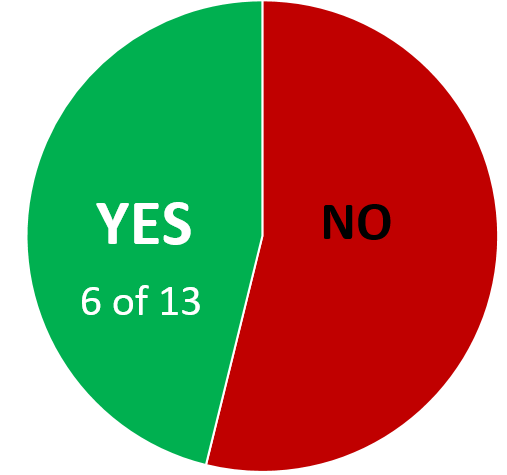
Can end of year surveys of business partners help the law department?




